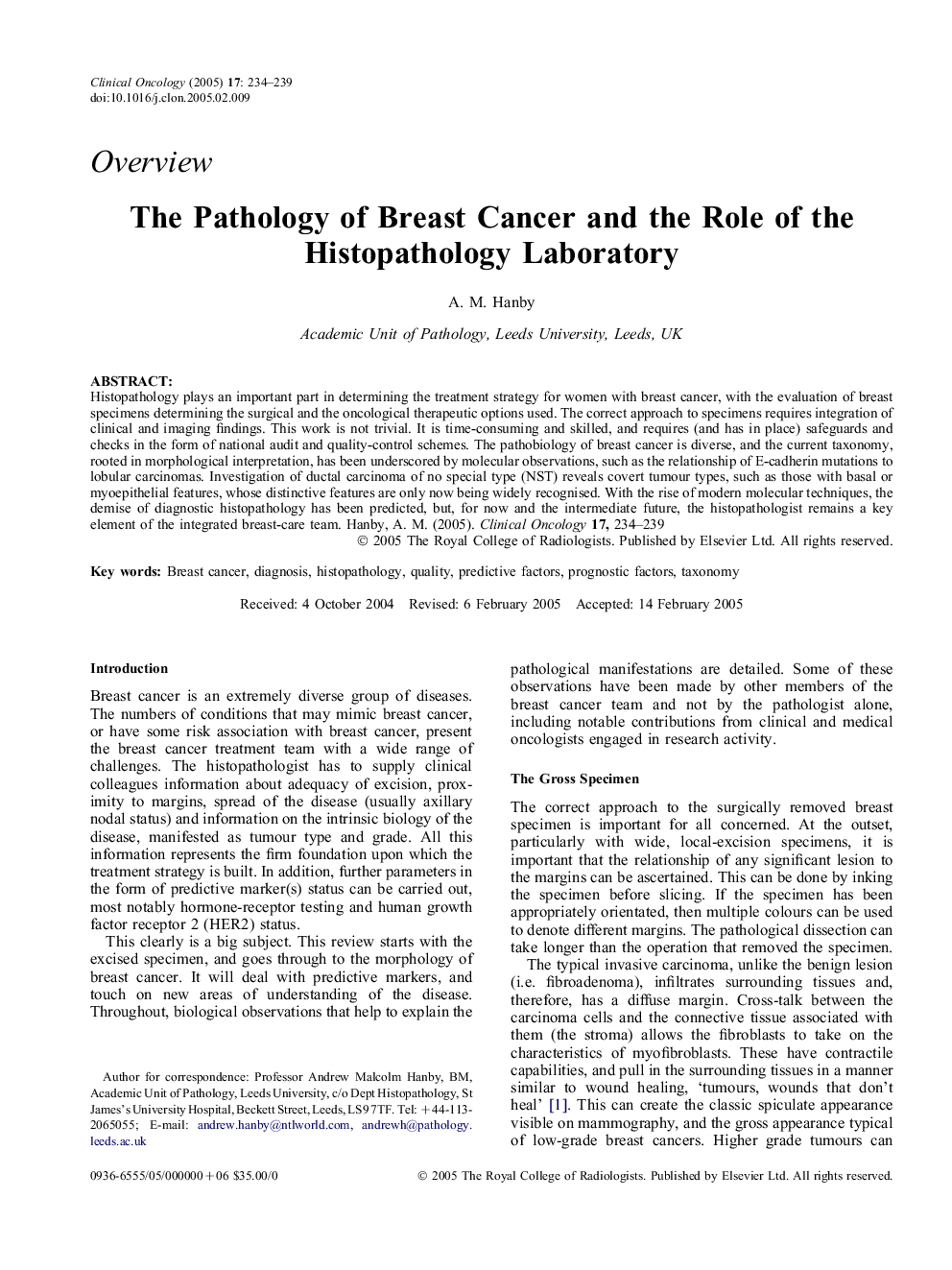| Article ID | Journal | Published Year | Pages | File Type |
|---|---|---|---|---|
| 9601001 | Clinical Oncology | 2005 | 6 Pages |
Abstract
Histopathology plays an important part in determining the treatment strategy for women with breast cancer, with the evaluation of breast specimens determining the surgical and the oncological therapeutic options used. The correct approach to specimens requires integration of clinical and imaging findings. This work is not trivial. It is time-consuming and skilled, and requires (and has in place) safeguards and checks in the form of national audit and quality-control schemes. The pathobiology of breast cancer is diverse, and the current taxonomy, rooted in morphological interpretation, has been underscored by molecular observations, such as the relationship of E-cadherin mutations to lobular carcinomas. Investigation of ductal carcinoma of no special type (NST) reveals covert tumour types, such as those with basal or myoepithelial features, whose distinctive features are only now being widely recognised. With the rise of modern molecular techniques, the demise of diagnostic histopathology has been predicted, but, for now and the intermediate future, the histopathologist remains a key element of the integrated breast-care team.
Related Topics
Health Sciences
Medicine and Dentistry
Oncology
Authors
A.M. Hanby,
